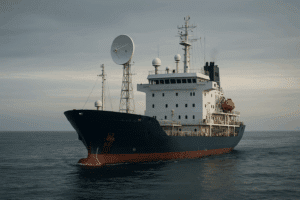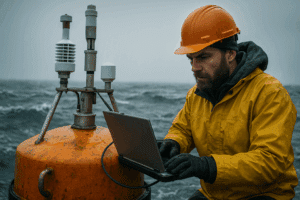Piracy and armed robbery at sea are not relics of the past. These modern-day threats continue to plague the maritime industry, jeopardizing the safety of seafarers and vessels worldwide. Their consequences extend far beyond the immediate danger – they have a ripple effect, impacting shipping companies, disrupting global trade, and destabilizing entire regions.
Where are the hotspots for international piracy accident?
Piracy, a persistent threat plaguing maritime trade, has continuously adapted its methods over the centuries. However, the core objective remains the same: take. Modern pirates may leverage advanced weaponry and technology, but their tactics still often involve boarding vessels, stealing cargo or valuables, or taking crews hostage for ransom. Regardless of the era, piracy relies on intimidation and violence, posing a grave danger to seafarers.
While the recent rise in piracy acts has put the Red Sea in the spotlight, attacks on trade routes in this region have a long history, stretching back centuries. The most significant modern threat emerged in the early 2000s with Somali pirates expanding their reach from the coast of Somalia into the southern Red Sea by 2010. Although their activity declined in the following decade due to international counter-piracy efforts, recent events point to a concerning resurgence.
Several factors contribute to this renewed piracy threat:
- The termination of the UN Security Council’s anti-piracy mandate in Somali waters in December 2022 may have encouraged pirate groups.
- The ongoing war in Yemen, which began in 2015, has created instability in the region. This instability could provide opportunities for pirate groups to operate with less resistance.
- Since November 2023, the Houthis, a rebel group in Yemen, have reportedly been directly involved in attacks on vessels perceived as supporting Israel, likely in solidarity with the Palestinian conflict. Additionally, hijackings and ransom demands could be a source of income for the Houthis to fund their war effort. More than 40 attacks on shipping occurred between October 2023 and March 2024, reportedly by the Houthis. These attacks resulted in the tragic loss of three sailors, the capture of one vessel, and the sinking of another.
Other regions of the world are considered high-risk regarding piracy incidents due to historical trends and ongoing concerns. Here are some of the major hotspots for shipping companies:
- Gulf of Guinea: This region off the coast of West and Central Africa has historically been a major piracy hotspot. While incidents have decreased, it’s still considered a high-risk area.
- Southeast Asia: The waters around Indonesia, Malaysia, and the Philippines continue to see incidents of piracy and armed robbery against ships.
- Latin America: Piracy and armed robbery are a concern in some areas of Latin America, particularly in the Caribbean and off the coast of Venezuela.
According to Statista 2022 figures, Southeast Asia was the most significant hotspot, accounting for a staggering 58 incidents of actual and attempted attacks. This represents the highest concentration of piracy activity compared to other regions, where incidents were reported off the African coast (21) and within American territorial waters (24). The report also details the types of vessels most targeted. Bulk carriers bore the brunt of attacks (50), followed by product tankers (13) and container ships (11).
What are the economic, and social consequences of piracy?
Piracy impacts not just shipping companies and seafarers, but also creates a vicious cycle that hinders global trade and economic growth, affects regional stability, and threatens the well-being of coastal communities.
Economic consequences
Detours due to piracy hotspots add significant distances to shipping routes. This translates to higher fuel consumption, longer journey times, and ultimately, increased transportation costs for consumers and businesses. Furthermore, the increased risk drives up insurance premiums for ships and cargo. This additional cost burden further impacts shipping companies and potentially gets passed on to consumers.
On the other hand, piracy disrupts the smooth flow of goods around the world. Cargo delays or rerouting can lead to shortages, price fluctuations, and unreliable delivery schedules. This can affect entire supply chains and hinder economic activity.
Piracy discourages legitimate maritime activities in affected regions. This can lead to a loss of revenue for coastal states from port fees, fishing licenses, and tourism.

Social consequences
Piracy poses a direct threat to the security and well-being of seafarers. Attacks can result in injuries, kidnappings, and even death. The constant fear of attack can also create a stressful work environment for crews. The dangers of piracy might discourage young people from pursuing maritime careers. This could lead to a shortage of qualified seafarers in the long run, further impacting global trade.
Piracy can contribute to instability in coastal regions, particularly where it’s fueled by poverty and lack of economic opportunities. The presence of pirates can deter foreign investment and hinder economic development.
Environmental consequences
Pirate activities can sometimes lead to environmental damage, such as pollution from spills or the illegal dumping of waste at sea.
How do shipping companies and governments combat piracy?
As piracy threats escalate in complexity, violence, and cost, shipping companies are forced to adopt a layered defense strategy. The tactics deployed aim to deter, detect, and delay pirate attacks.
Early detection of risks, deterrence and defense for shipping companies
In response to the Houthis attacks, a major shift in global trade routes is underway. To avoid the Red Sea, typically carrying 12% of global trade, shipping firms are forced to reroute cargo on longer journeys around Southern Africa. The detour around the Cape of Good Hope adds a significant distance, ranging from 3,000 to 6,000 nautical miles. This translates to roughly two additional weeks at sea, substantially increasing transportation costs.
To complement cargo rerouting, companies have a long-term strategy in place to prevent attacks and protect their crews and vessels.
- They subscribe to maritime domain awareness services that utilize satellite imagery, radar, and other tools to track suspicious activity in piracy hotspots. Besides, ships are equipped with LRIT (Long-Range Identification and Tracking) systems that broadcast their identification and location, allowing authorities to monitor vessels and identify risks.
- Many companies hire private security firms to provide armed guards on board ships. These security personnel deter pirates through their presence and ability to use force if necessary.
- Certain ships can deploy obstacles like barbed wire and razor fencing on deck to further hinder boarding attempts.
- Some vessels are reinforced with citadels, where crew can retreat and defend themselves during an attack. These secure areas are often bulletproof and equipped with communication tools, along with alarms and surveillance systems to alert crew members of a potential attack. The latter also maintains high-frequency communication with authorities and other vessels in the region to report anomalies and request assistance quickly whenever required.
- High-powered water cannons can be used to disorient and repel pirates attempting to board.
- Trained crews can implement evasive maneuvers to make their ships harder to board, such as zig-zagging or changing course unexpectedly.
- Capping off their layered defense, shipping companies forge a crucial partnership with regional and international maritime authorities and organizations like the IMO.
Best management practices sharing for the IMO
Additionally, the International Maritime Organization (IMO) publishes best management practices (BMP) for mariners operating in high-risk areas. These guidelines cover crew training, voyage planning, and onboard security measures. They include the standards set in the Safety of Life at Sea (SOLAS) Convention, whose overall goal of SOLAS is to minimize the risk of accidents at sea, loss of life, and pollution from ships.
International cooperation
Combating piracy requires a multifaceted approach, and technology is emerging as a game-changer. Drone surveillance can provide a wider field of view in vast maritime areas, helping authorities maintain a constant presence in all high-risk zones. Advanced communication systems ensure real-time information exchange between ships, authorities, and security firms. Additionally, data analysis plays a crucial role in predicting pirate activity, adjusting strategies, and optimizing patrol routes. Limited resources, such as patrol vessels and personnel, combined with pirates operating in international waters, indeed pose a significant challenge for governments.
But technology alone isn’t enough. Public-private partnerships are essential for a comprehensive strategy. Governments, shipping companies, and maritime security firms must work together to share resources, expertise, intelligence, and best practices. Furthermore, they develop standardized anti-piracy measures and protocols and coordinate armed naval patrols, combined with aerial surveillance, and intelligence gathering in important maritime chokepoints to disrupt pirate operations before they launch attacks. Furthermore, national and international law enforcement agencies cooperate to investigate incidents, apprehend and bring convicted pirates to justice, and if necessary, fend off pirate vessels to discourage future attacks.
Through close collaboration, stakeholders can significantly enhance anti-piracy measures, ensuring a swift response to any incidents that may still occur. This minimizes potential damage to vessels and, most importantly, safeguards the safety of seafarers.
Frequently Asked Questions about Piracy in moderns times
The main piracy threats today include hijackings, armed robbery, kidnappings for ransom, and cargo theft. Hotspots include the Gulf of Guinea, Southeast Asia, and parts of the Indian Ocean.
The maritime industry is responding with increased security measures such as deploying armed guards, using advanced surveillance technologies, and implementing best management practices (BMPs). Collaboration with international naval forces and organizations is also crucial.
Technologies used to combat piracy include radar and satellite tracking systems, automated identification systems (AIS), long-range acoustic devices (LRADs), and advanced communication tools for real-time threat reporting and response coordination.
Ship crews can protect themselves by undergoing specialized anti-piracy training, maintaining vigilant watchkeeping, following BMPs, using citadels (safe rooms), and having non-lethal deterrents like water cannons and electric fences on board.
International efforts include the establishment of task forces like the Combined Maritime Forces (CMF), coordinated patrols by navies from various countries, and initiatives by the International Maritime Organization (IMO) to improve global maritime security. Additionally, regional cooperation and information-sharing agreements play a vital role.


